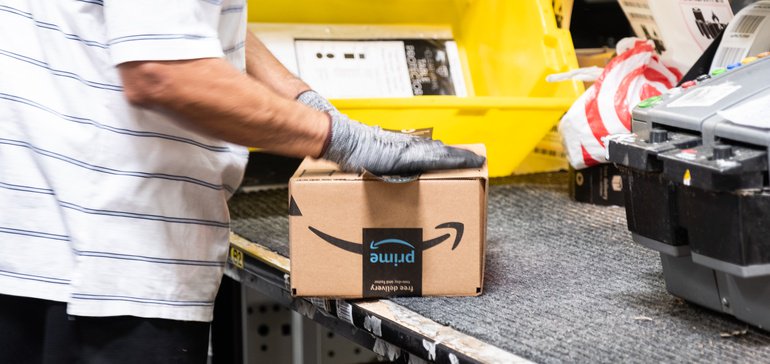
Dive Brief:
- Providers are allocating a smaller percentage of medical supply purchases to Amazon this year compared to 2018, though they’ve increased the percentage of non-medical office supplies buys, perhaps because companies receive higher discounts in office than medical supplies from the e-commerce giant, a survey of hospital purchasing managers by UBS found.
- This isn’t ruinous news for the retailer’s health supply chain ambitions, however — a majority of the 100 respondents to the the investment bank’s poll expect to increase their percent allocation of medical supply purchases through Amazon in three years.
- UBS also found a larger percentage of respondents were using a group purchasing organization (81%) compared to last year (75%), while fewer were using a regional purchasing organization. The percentage of hospitals using Premier grew significantly year over year, from 30% to 44%, largely at the expense of GPO competitor HealthTrust.
Dive Insight:
E-commerce giant Amazon continues to wiggle into multiple healthcare markets, including at-home prescription drug delivery, HIPAA-compliant artificial intelligence and machine learning, selling glucose monitors and blood pressure cuffs direct to the consumer and more. But this survey’s results are a mixed bag in terms of one area Amazon believes it can majorly disrupt: medical supply chains.
U.S. hospitals could save $ 25.4 billion annually by streamlining their supply chains to eliminate waste and unnecessary cost, according to a Navigant analysis of 2,300 hospitals. That’s roughly $ 11 million in savings per hospital per year and a tempting opportunity for supply chain players. The market is forecast to reach $ 2.3 billion by 2022.
Though Amazon already sells some healthcare and IT equipment to hospitals, integrated delivery systems and physician offices (and touts the cost-saving benefits of its multiple supplier marketplace, Amazon Business), initial provider results vary. Amazon Business head Chris Holt told Healthcare Dive last year the platform helped Summit Pacific Medical Center in rural Washington cut labor expenses by 80%, lowering related spend.
However, New York-Presbyterian was unable to achieve better supply chain pricing by using Amazon, alongside concerns about lack of options or less control over purchases and shipping.
According to the UBS survey, the top reservation health systems have about working with Amazon is lack of control, oversight or standardization (30%), followed by worries around product quality (20%) and limitations on the types of products available (10%). Respondents were less concerned about the three than last year, though the order of reservations remained the same — all contributing to why acute care hospitals seem to be using Amazon less for their medical supplies purchases.
Researchers from UBS aren’t sure whether Amazon’s discounts on medical supplies declined, or if competitors’ prices came more in line with the e-commerce giant, driving clients away.
The survey also dove into utilization and satisfaction with group purchasing organizations, when a group of businesses form a single purchasing entity to obtain discounts from vendors. The country’s some-600 GPOs save the healthcare industry an estimated $ 34.1 billion annually, according to the Healthcare Supply Chain Association.
Though a greater number of respondents were likely to use Charlotte, North Carolina-based Premier, users reported similar amounts of satisfaction across Premier, HealthTrust and Vizient and its subsidiary MedAssets. Premier customers saw larger discounts versus other GPOs, a boon UBS chalked up to Premier’s sourcing ability and its associated savings. Smaller hospitals expect to see the largest discounts versus mid- and large-size hospitals, UBS found, likely because smaller facilities have more to gain from joining with other groups to leverage purchasing power.
